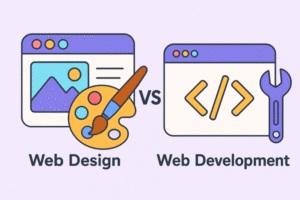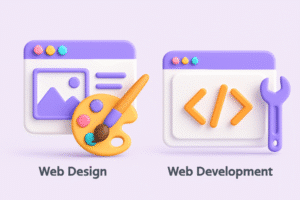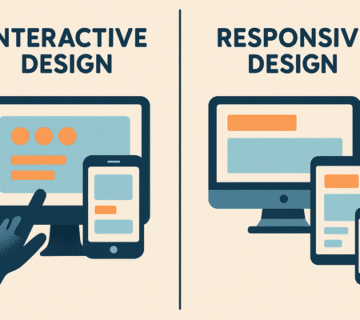The Difference Between Web Design and Web Development
Introduction to Web Design and Development
Web design and web development represent two distinct but equally important aspects of building websites. In the context of modern technology, web design refers to the process of determining how the user interface of a website appears on the screen.
This includes elements like colors, fonts, images, and graphics, all of which contribute to creating an engaging visual experience for users. Web development, on the other hand, involves writing the code and programming required to make the site function properly. It includes creating software, managing databases, and integrating various technologies to ensure smooth and effective website performance.
The Difference Between Design and Development
The difference between web design and web development can be summarized as follows: design focuses on aesthetics and user experience, while development focuses on how the website works and how it integrates with other technologies. When evaluating the importance of both roles:
Design plays a key part by offering a user-friendly and appealing interface, which increases user interaction. Meanwhile, web development ensures that all these visual elements work together seamlessly, making the site responsive, reliable, and secure.
A comprehensive understanding of both concepts enables technical teams to work harmoniously, contributing to websites that are both attention-grabbing and user-centric. Therefore, both web design and development are essential in the digital age,
where creating a smooth and attractive user experience is vital amidst intense online competition. Understanding the difference also helps in identifying the right skills and best practices for building successful websites.

Web Design: Aspects and Tools
Web design is a set of processes aimed at creating website interfaces that ensure a functional and appealing user experience. The most important aspects of web design include User Experience (UX) and User Interface (UI).
UX focuses on how visitors interact with the site and their overall emotional response, while UI centers on the visual elements like buttons, menus, and colors. Balancing both is essential to deliver a design that meets user expectations.
Web Design Tools
When it comes to web design tools, they play a crucial role in realizing the designer’s vision. Some of the most widely used software includes Adobe XD, Figma, and Sketch, which allow designers to create prototypes, design interfaces, and collaborate effectively.
For example, Adobe XD is known for speeding up the design process with its intuitive interface and powerful features, while Figma shines with its multi-user collaboration feature, enabling real-time teamwork.
Examples of strong web design often include websites that prioritize clarity, navigation ease, fast loading speeds, and mobile compatibility. Companies like Airbnb and Apple are known for web designs based on best practices, helping to boost user experience and leave a lasting impression. As a result, web design becomes a vital launchpad for any digital project’s success.
Web Development: Fundamentals and Technologies
Web development is the process of building and maintaining websites, encompassing the coding and technical components that make a site function effectively. Generally, web development is divided into two main categories:
- Front-end development
- Back-end development
Front-End Development
Front-end development refers to the part of the website users directly interact with. It involves programming languages like HTML to structure the pages, CSS to style and format the design, and JavaScript to add interactive elements. These are the core tools front-end developers use to deliver a smooth and engaging user experience.
Back-End Development
On the other hand, back-end development deals with the part of the website that users don’t see, but which plays a vital role in data processing and database interaction. Programming languages here may include PHP, Python, Ruby, and Node.js, along with database systems like MySQL and MongoDB. Back-end development is essential for handling user requests and delivering data to the front end.
Overall, both front-end and back-end development are crucial aspects of web development. Each requires its own set of skills and technologies, and their integration ensures that websites operate smoothly and efficiently. A solid understanding of the technical and coding components enables developers to meet the needs of both users and clients.

The Integration Between Web Design and Development
The integration between web design and web development is a fundamental component of any successful digital project. These are not two isolated tasks but closely connected processes. Developers rely heavily on the designs provided by designers,
so good communication between both teams is essential to creating functional and visually appealing websites. When designers create user interfaces,
those designs must be technically feasible for developers to implement. This requires continuous collaboration to ensure that the creative vision aligns with technical constraints.
Design inconsistencies often lead to challenges during development. For example, if a design includes unconventional features or complex interactive elements, it may require timeline adjustments or even increased costs.
Therefore, early alignment between designers and developers is vital—covering all aspects of the design,
including colors, fonts, and overall layout—to ensure a smooth user experience. Awareness of both design and development limitations allows teams to create innovative and effective solutions.
Additionally, clearly defining the roles of designers and developers contributes to the project’s success. Designers typically focus on the visual interface and user experience,
while developers handle the technical side, including programming and database integration. By clarifying roles, each team can work toward shared goals more effectively, strengthening the overall integration of design and development.




1 Comment